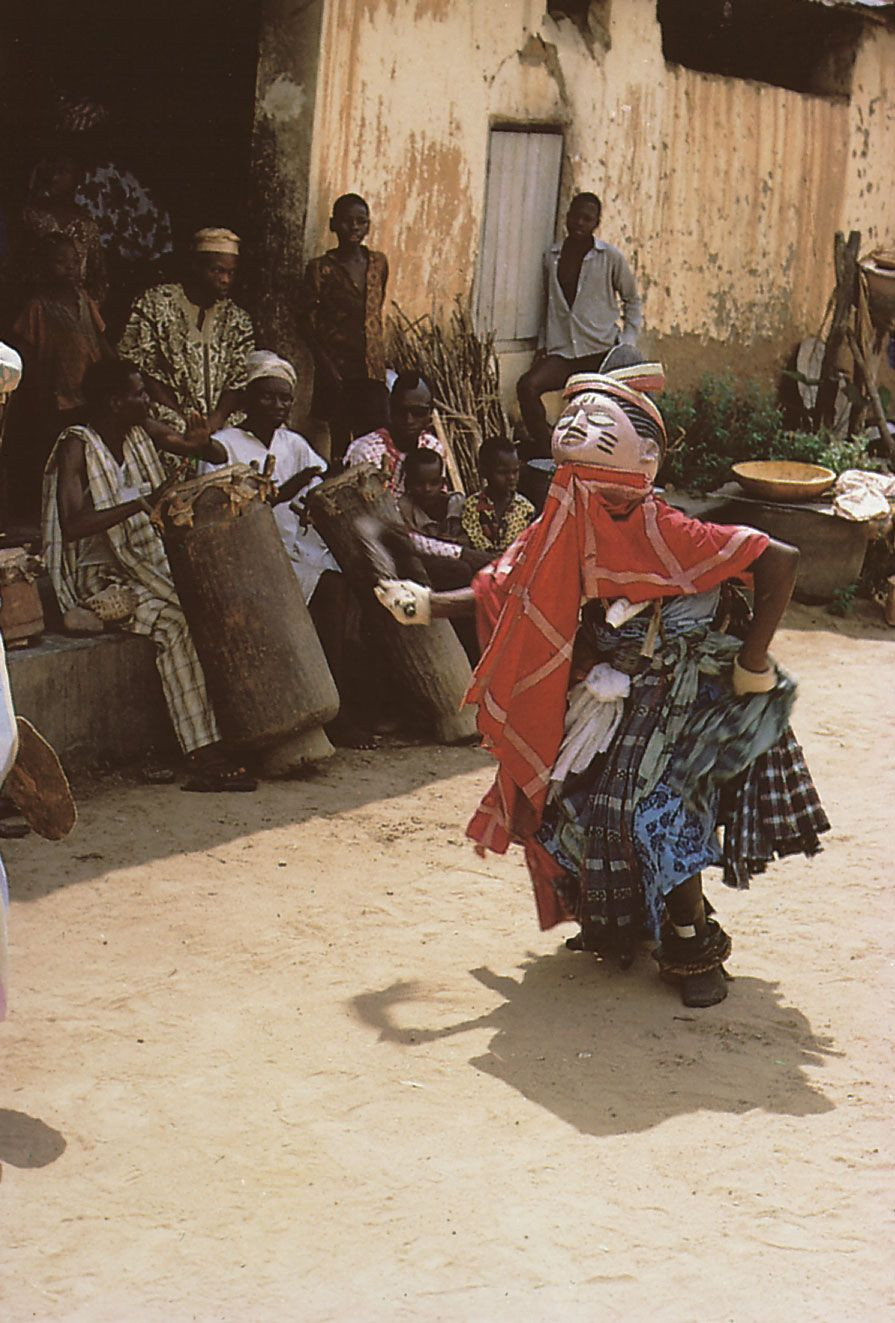African dance is a vibrant and integral performing art deeply embedded within the social structures of Africa. More than just rhythmic movement, it’s a powerful form of expression interwoven with music and theatre, reflecting the continent’s diverse cultures and traditions. This exploration delves into the heart of African Dance In Africa, revealing its cultural significance and profound connection to the spiritual and communal life of its people.
The Cultural Significance of Dance in African Societies
In Africa, dance transcends mere entertainment; it serves a multitude of crucial social functions. Within any indigenous African dance tradition, a performance carries both primary and secondary purposes. These purposes often articulate and reinforce the shared values and intricate social relationships that bind communities together. To truly appreciate the vast spectrum of African dance styles, understanding the intended purpose of each dance is paramount.
 A rock art painting depicts a group of figures engaged in a dance performance, showcasing the deep historical roots of dance in African culture.
A rock art painting depicts a group of figures engaged in a dance performance, showcasing the deep historical roots of dance in African culture.
The lines between ritualistic celebration and social recreation frequently blur in African dance performances. These purposes seamlessly merge, as exemplified by the grand Efe mask’s appearance during the Gelede ritual festival celebrated in the Ketu-Yoruba communities spanning Nigeria and Benin. At the stroke of midnight, the Efe mask emerges dramatically before the anticipating community, the wearer chanting potent incantations to appease malevolent spirits. Subsequently, the dancer transitions into a vigorous, stamping dance as homage to the revered Earth Mother and the esteemed women elders of the community. The performance evolves as the dancer pauses to intone praises for individuals of high social standing, meticulously observing their hierarchical order. In this manner, a ritualistic act metamorphoses into a social declaration, which then gracefully transitions into recreation as the structured Gelede group dance gives way to spontaneous participation from onlookers until the break of dawn. The eminent Efe figure takes centre stage, captivating the audience with narratives that humorously and satirically allude to societal misbehaviour observed within the community throughout the preceding year.
The weight of the concept embodied within a dance directly correlates with the audience’s appreciation. A profound message elicits greater audience engagement, intensifying their expectations for a skillful performance and movements that authentically convey the dance’s intended meaning. Dance is cherished as a social gathering, yet simultaneously valued intrinsically as an activity that entertains, delights, and expresses the essence of communal existence.
 A Gelede masquerader in vibrant attire dances in the courtyard of a palace, illustrating the performative and celebratory aspects of African dance in social contexts.
A Gelede masquerader in vibrant attire dances in the courtyard of a palace, illustrating the performative and celebratory aspects of African dance in social contexts.
The Religious Context of African Dance in Africa
Traditional African belief systems are deeply rooted in a worldview that perceives constant interaction between the spiritual realm and the human community. Spiritual entities may inhabit natural elements, animals, and can also possess human intermediaries. This possession is typically temporary and ritualistic, as seen when a priest of the Yoruba deity Shango enters a profound trance state during the annual festival. In this state, the priest embodies the wrath of the thunder god, manifested through lightning-fast arm gestures and powerful shoulder movements. In Zimbabwe, Mhondora spirit mediums, who connect the Shona people with ancestral guardian spirits, achieve trance through the music of the mbira lamellaphone. They sing to the instrument’s melodies while performing simple, repetitive footwork. These dances performed by priests and mediums affirm their spiritual leadership and connection to the divine.
Dance also serves as a therapeutic tool within ritualistic societies across numerous African cultures. For instance, Hausa women find healing through dance and spirit possession within the Bori cult. Among the Jukun people of Nigeria, a similar organization known as the Ajun addresses women’s hysterical disorders by exorcising malevolent spirits during initiation ceremonies. Over a three-month period within a house shrine, sufferers are taught songs and dances with therapeutic functions, culminating in a public ceremony where the initiate joins society members in performing the Ajun-Kpa dance. Female spirit mediums of the Kalabari people in the Niger Delta also utilize dance and song as integral components of their healing practices, and are revered for their therapeutic abilities.
Many African religions are founded upon the principle of continuity between the living and their deceased ancestors. In certain cultures, ancestors are believed to return as masquerade performers to guide and judge the living. The intricate network of human relationships is continually renewed and reaffirmed at ritual festivals through various art forms, with dance playing a central and vital role.
In conclusion, African dance in Africa is far more than just movement; it is a profound cultural institution. It serves as a cornerstone of social life, a powerful medium for religious expression, and a vital thread in the rich tapestry of African heritage. Through its diverse forms and functions, African dance continues to resonate as a dynamic and essential element of life across the continent.
